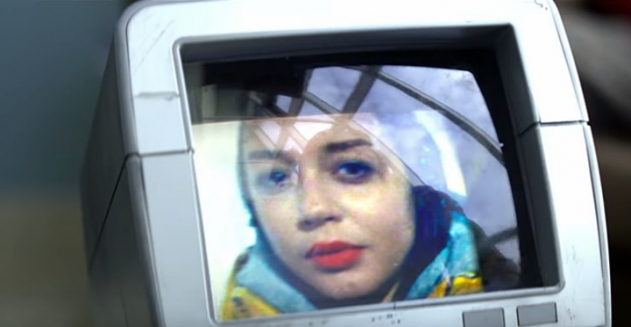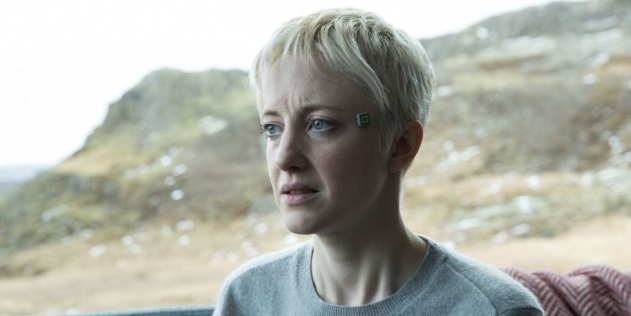
Mind reading is no longer relegated to the fantasy genre. In the real world, researchers have shown that it is possible for a person see another person’s thoughts. In episode three (“Crocodile”) of Charlie Brooker’s most recent series of his show BLACK MIRROR, so popular it has become shorthand for negative effects of technological advances, an insurance agent uses a video monitor and brain sensors to visually corroborate what witnesses verbally recount of an accident. Eyewitness testimony is inherently unreliable; researchers such as Elizabeth Loftus at University of California, Irvine and Anthony Wagner at Stanford have shown how suggestible people are to prompts and misinformation. Subjects can be convinced of life events that never happened. The new technology that enables a person to visualize another person's thoughts could make eyewitness testimony more reliable. It hasn't been used to do so. Yet.
This technology, called brain decoding, is the real-world equivalent to the technology that BLACK MIRROR’s episode “Crocodile” envisions. When a person sees something, the brain's visual cortex is activated. The brain monitoring technique functional magnetic resonance imaging (fMRI) measures changes in brain oxygenation indicating what areas of the brain are active. Neuroscientist Jack Gallant’s lab at the University of California Berkeley is the preeminent lab researching brain decoding. Dr. Gallant has collected fMRI data on two of five areas of the visual cortex activated by video clips, and developed a computer algorithm that learns to recognize patterns of activation associated with those clips. Then, researchers can recreate visually what the person saw. (Dr. Gallant has just monitored brain Areas V1 and V2 so consequently the videos he has rendered lack more complex visual information processed by brain areas V3, V4, and V5.) “This is the closest to mind reading in the way that BLACK MIRROR envisioned as you can imagine,” the head of Duke University’s Bioethics & Science Policy, Nita Farahany, told Science & Film over the phone on January 9. “The difference is that BLACK MIRROR was envisioning recall of a past event as opposed to what [a person is] seeing immediately.”

Brain decoding hasn’t been used in the kind of way that BLACK MIRROR presents, where people are required by law to allow an investigator to view their memories.
Other researchers, Dr. Farahany said, have built on what Dr. Gallant has done to reconstruct visual images not just of what someone is seeing in real time, but what someone is thinking about. “If I were to tell you, think about what you did last night, then you’re going to think about that and activate your visual cortex to think about it because you’re going to replay it in your head. When you replay it in your head, you reactivate your visual cortex,” said Dr. Farahany. “If you’re thinking about something, you are almost playing back a video in your head.” Researchers have been able to recreate that video, and have even looked in to reconstructing images from dreams, and daydreams, Dr. Farahany continued.
There is a distinction of course between thinking about something and feeling it–brain decoding technology is focused on seeing what the person has seen, not feeling what they’ve experienced. For that, see the series four finale–“Black Museum.” In “Crocodile,” the insurance agent notices that when there is an emotional component to a memory, the images are much stronger; be it a memory of an attractive person, or of a murder. “If I want to see just what you’re seeing rather than what you’re experiencing, I can get a lot of information just by reconstructing the visual cortex,” Dr. Farahany added.
On Dr. Gallant’s website, he comments on the possibility that brain decoding will be used in the court room. “Any brain-reading device that aims to decode stored memories will inevitably be limited not only by the technology itself, but also by the quality the stored information. After all, an accurate read-out of a faulty memory only provides misleading information. Therefore, any future application of this technology in the legal system will have to be approached with extreme caution.”

“Crocodile” is episode three of season four of BLACK MIRROR, available on Netflix. It is directed by John Hillcoat (THE ROAD), and written by Charlie Brooker. Andrea Riseborough (BATTLE OF THE SEXES) and Kiran Sonia Sawar (LEGENDS) star. The series began in 2011, and the first and second seasons were produced and distributed by the UK’s Channel 4. Seasons three and four were commissioned by Netflix.
For more, read Science & Film’s interview with a computer scientist on season three’s episode “Playtest” about video games that are all too real.